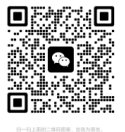Breaking Through Life's Barriers Under the Bragg Peak
Breaking Through Life's Barriers Under the Bragg Peak: When Carbon Ions Penetrate the "Impenetrable Fortress" of Adenoid Cystic Carcinoma
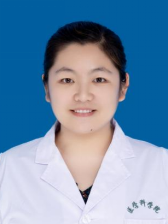
Chai Hongyu
Gansu Wuwei Cancer Hospital, Lanzhou Branch
Department of Radiation Oncology (Lanzhou Branch)
Attending Physician
"In the rugged journey of life, there must come a moment when we transcend ourselves. To all those wrestling with self-doubt: May you, like me, clench your teeth and hold on — for perseverance breeds hope, breakthroughs await, and the tide is turning. Let us march forward together. With deepest gratitude to carbon-ion therapy, which guided me from darkness back into light."
— Patient Testimonial
The winter of 2019 was unusually mild. At that time, Ms. Xue worked for a prestigious Beijing-based corporation, living a routinized life shuttling between two fixed points — her office and home. Recently, she noticed progressive, painless proptosis and periorbital edema in her right eye, potentially exacerbated by chronic sleep deprivation. Initially attributing the symptoms to fatigue, she anticipated spontaneous resolution with rest. However, the ocular protrusion for weeks, accompanied by deteriorating visual acuity. Alarmed by this clinical deterioration, Ms. Xue requested medical leave and underwent diagnostic imaging at a leading hospital in Beijing. Radiological findings adenoid cystic carcinoma originating from the right maxillary sinus, and optic nerve encroachment on the optic nerve. The devastating diagnosis struck her like a bolt from the blue, plunging the once-composed professional into a state of paralyzing shock and anxiety-ridden confusion.
"The moment I learned that the tumor in my body required enucleation, despair became my only reality," recalled Ms. Xue. For a young woman facing such disfiguring surgery, the psychological toll was unbearable. Supported by her family, she sought consultations at multiple hospitals nationwide, only to receive consistent recommendations for radical resection. By 2020, after over a year of disease progression, her right eye had completely lost vision. She then traveled to Japan for expert evaluation, where oncologists emphasized that carbon-ion therapy offered the sole chance for improved local tumor control. Financial constraints ultimately compelled her to return to China.
Providentially, on March 26, 2020, China's first clinical heavy-ion therapy system commenced operations at Wuwei. This breakthrough became Ms. Xue's beacon of hope. Through teleconsultation with Gansu Wuwei Heavy Ion Center, she received comprehensive pretreatment counseling. Resolutely, she underwent carbon-ion radiotherapy at the institution's oncology facility.
Therapeutic outcomes proved remarkable: The temporal inferior pole mass invading the orbital cavity demonstrated rapid regression. Light perception returned to her previously blind right eye during treatment, with post-therapeutic imaging revealing nearly 70% tumor volume reduction (partial response per RECIST criteria). Discharging with jubilation, Ms. Xue and her family resonated the bell of triumph - a symbolic celebration of her reclaimed life.
"Three months post-discharge, Ms. Xue telephoned our center with jubilant news, having forwarded her follow-up imaging studies. Director Li's evaluation confirmed complete radiological response indicating tumor eradication. This therapeutic triumph reignited Ms. Xue's zest for life. In her heartfelt testimonial, she articulated:
'In the rugged journey of life, there must come a moment when we transcend ourselves. To all those wrestling with self-doubt: May you, like me, clench your teeth and hold on—for perseverance breeds hope, breakthroughs await, and the tide is turning. Let us march forward together. With deepest gratitude to carbon-ion therapy, which guided me from darkness back into light.'"
Heavy-Ion Radiotherapy: Beam Arrangement and Dose Distribution in Target Volumes

Therapeutic Effect
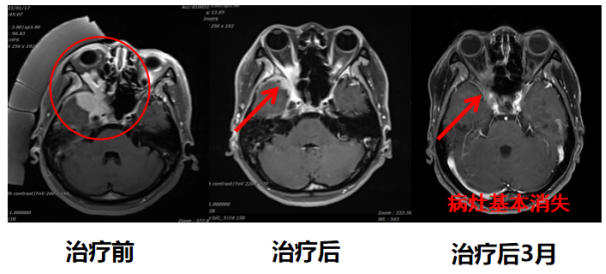
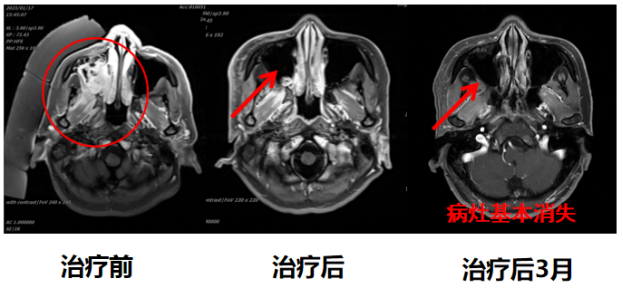
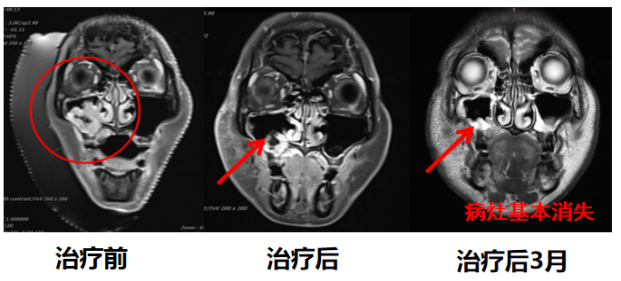
Another characteristic of ACC is its resistance to chemoradiotherapy, proneness to local recurrence and distant metastasis, and treatment difficulty. As a means of precision treatment of tumors, carbon-ion beams precisely irradiate tumor sites with high accuracy and strong penetrating power, enabling tumors of varying depths and sizes to be precisely targeted within the Bragg peak region. Adenoid cystic carcinoma (ACC), which is insensitive to conventional photon therapy, has a higher relative biological effectiveness (RBE) and can improve its tumor lethality. In radiotherapy of head and neck ACC, heavy ion radiation therapy can provide a more precise dose distribution, promoting high-dose irradiation of tumor volumes while sparing surrounding normal tissues. In recent years, we have treated ACC patients in various parts of the head and neck, such as the base of the tongue, hard palate, lacrimal gland, maxillary sinus, etc., and have achieved satisfactory results and protected normal organs. In 2022, we treated a case of ACC with invasion of the base of the tongue into the floor of the mouth and the supraglottic larynx. The patient, Mr. Yang, presented a hospital in Shanghai one year ago due to unbearable pain at the base of the tongue, and was pathologically confirmed to be adenoid cystic carcinoma at the base of the tongue after examination, and was assessed to be unable to undergo surgical treatment. To resolve the pain, the patient received arterial embolization chemotherapy, but the pain remained unrelieved and severely affected diet and sleep. In 2022, the patient visited our center and underwent a 10-fraction carbon-ion radiotherapy regimen, and the pain was basically relieved. The results of the follow-up examination brought them unexpected surprises, the tumor disappeared, and the curative effect reached CR. The PET-CT scan showed that the metabolism of the root of the tongue basically disappeared in 6 months after treatment, and the MRI of the nuclear review in September after treatment showed that the structure of the root of the tongue was completely normal.
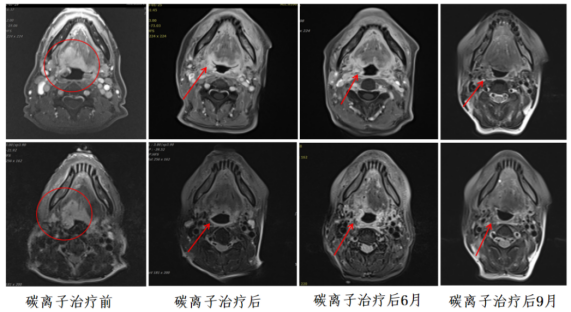
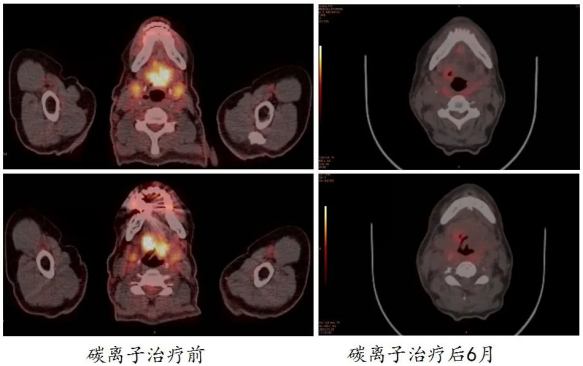
Up to now, adenoid cystic carcinoma of the head and neck has emerged as the third most commonly treated cancer type at Lanzhou Heavy Ion Center. Carbon ion radiation therapy is a treatment with favorable efficacy profiles and minimal toxicities, and is indicated for patients with unresectable and postoperative residual tumor, radiotherapy-resistant, or recurrent head and neck adenoid cystic carcinoma. A prospective phase III trial comparing conventional photon radiation therapy with heavy ion radiation therapy for adenoid cystic carcinoma found that the 10-year LC rate for heavy ion therapy was 56% compared to 17% for conventional photon radiation therapy. In a retrospective study, the 5-year LC rate was significantly higher than 75% in the heavy ion therapy group compared with 32% in the photon therapy group. In comparison, compared with conventional photons, the local control rate and overall survival rate of ACC with heavy ion therapy were significantly increased. A large number of literature review studies have shown that carbon ion therapy can be used as one of the main treatments for ACC.
Professor Junjie Wang's Clinical Research Team
Lanzhou Heavy Ion Center
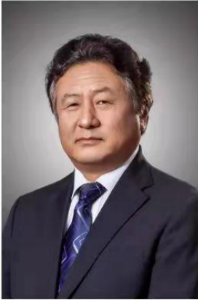
Wang Junjie
Chief Physician, Professor
Currently serves as Director of the Department of Radiation Oncology at Peking University Third Hospital, Doctoral Supervisor, Director of the Brachytherapy Center at Peking University Health Science Center, and Deputy Director of the Department of Radiation Oncology at Peking University
Chairman of the 10th Committee of the Society of Radiation Oncology, Chinese Medical Association
Inaugural Chairman of the Brachytherapy and Intelligent Radiotherapy Society of the Chinese Nuclear Society
Vice Chairman of the Minimally Invasive Therapy Committee of the Chinese Anti-Cancer Association
Chairman of the Radioactive Particle Ablation Technology Committee of the National Strategic Alliance for Technological Innovation in Tumor Minimally Invasive Therapy Industry
Associate Editor-in-Chief of the Chinese Journal of Radiological Medicine and Protection
Editorial Board Member of the American journal Brachytherapy
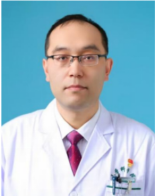
Li Xiaojun
Chief Physician, Vice President
Currently serving as Assistant Dean of Gansu Province Wuwei Cancer Hospital and Vice President of Lanzhou Proton and Heavy Ion Hospital
Gansu Province Longyuan Youth Talent, Gansu Province Health Industry Outstanding Youth Talent
Heir of Traditional Chinese Medicine (TCM) at Gansu Provincial Health Commission
Visited the RPTC Proton Center in Munich, Germany; studied at the Shanghai Proton and Heavy Ion Hospital, Beijing Cancer Hospital, Sichuan Cancer Hospital, and the Varian Training Center in the USA
Specializes in radiation therapy for tumors of the central nervous system, head and neck, chest, abdominal and pelvic regions, and extremities
Awarded the Second Prize of Gansu Provincial Science and Technology Progress and multiple science and technology progress awards in Wuwei City
Led and participated in over 10 provincial and municipal research projects, including major provincial science and technology special projects and key talent programs of the Provincial Party Committee Organization Departmen
Published 7 SCI papers as the first/corresponding author and over 30 papers in domestic core journals; holds 10+ invention and utility model patents for radiation therapy
Clinic Schedule: Monday to Friday, 5th Floor of the Inpatient Department, Lanzhou Campus
